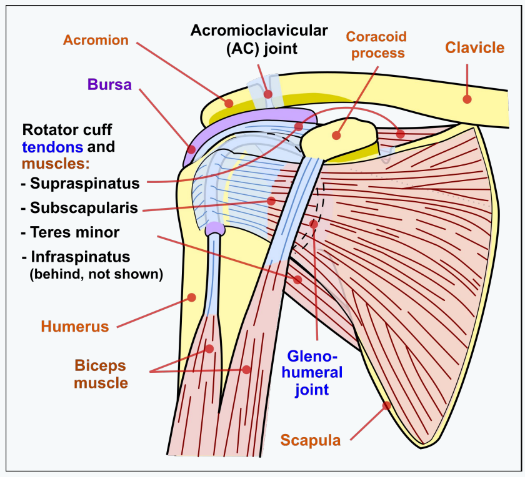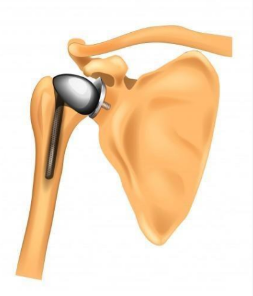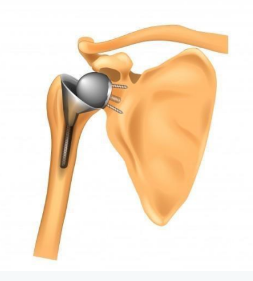July 17, 2024
Shoulder Replacement: Traditional vs. Reverse - Which One is Right for You?
Shoulder pain can significantly impact your daily life, making even simple tasks a struggle. If conservative treatments haven't provided relief, shoulder replacement surgery might be an option. But with two main types - traditional and reverse - choosing the right procedure can feel overwhelming. This blog explores the key differences between traditional and reverse shoulder replacements, helping you navigate this critical decision.
Understanding Your Shoulder Anatomy
Your shoulder is a complex joint with several muscles and ligaments working together to provide mobility and stability. The rotator cuff muscles, located around the shoulder joint, play a crucial role in keeping the ball (humeral head) of your upper arm bone securely in the socket (glenoid) of your shoulder blade.

Indications for Shoulder Replacement Surgery
Several conditions can necessitate shoulder replacement surgery, including:
- Age-related wear and tear: Over time, the cartilage in your shoulder joint can break down, leading to osteoarthritis.
- Rheumatoid arthritis: This autoimmune disease can inflame the synovial membrane, the lining of your joint, causing pain and stiffness.
- Rotator cuff tear arthropathy: When a severe rotator cuff tear damages the joint surface, a traditional replacement might not be effective.
Traditional Shoulder Replacement (TSA)

A traditional shoulder replacement aims to replicate your natural shoulder anatomy. Here's a breakdown of the procedure:
- Implant placement: The surgeon removes the damaged humeral head and replaces it with a metal ball. The glenoid socket is smoothed and resurfaced with a polyethylene liner.
- Benefits: Traditional replacements can offer a wider range of motion and a more natural feel compared to reverse replacements.
- Recovery: Physical therapy is crucial for regaining strength, flexibility, and motion after surgery. A typical rehabilitation program involves progressive exercises, starting with gentle movements and progressing to strengthening activities.
Reverse Shoulder Replacement (rTSA)

A reverse shoulder replacement takes a different approach, essentially reversing the ball-and-socket configuration. Here's what to expect:
- Implant placement: The damaged humeral head is removed and replaced with a socket component. The glenoid socket is replaced with a metal baseplate and a ball-shaped attachment (glenosphere).
- Benefits: Reverse replacements are particularly beneficial for patients with rotator cuff dysfunction, as they rely on different muscles for shoulder movement. This can significantly improve pain and function.
- Recovery: Similar to traditional replacements, physical therapy plays a vital role in recovery after a reverse shoulder replacement. The rehabilitation program is designed to progressively improve your range of motion, strength, and coordination.
The Importance of Physical Therapy in Recovery
Regardless of the type of shoulder replacement surgery you undergo, physical therapy is an essential component of a successful recovery. A qualified physical therapist will create a personalized rehabilitation program to help you:
- Reduce pain and inflammation
- Restore range of motion and flexibility
- Improve strength and stability
- Regain functional movement patterns
- Return to your daily activities
At Agape Physical Therapy, our experienced therapists understand the complexities of shoulder replacements and are dedicated to helping you achieve optimal outcomes. We will work closely with you to create a customized treatment plan that addresses your specific needs and goals.
Choosing the Right Procedure
The decision between a traditional and reverse shoulder replacement surgery depends on several factors, including the underlying cause of your shoulder pain, the condition of your rotator cuff, and your desired activity level. Consulting with a qualified orthopedic surgeon is essential to determine the most suitable option for you.
Ready to Take Charge of Your Shoulder Health?
If you're experiencing persistent shoulder pain that limits your daily activities, don't hesitate to seek professional help. At Agape Physical Therapy, we offer comprehensive shoulder evaluations and can guide you towards the most effective treatment options.
Contact Agape Physical Therapy today to schedule an appointment and start your journey towards a pain-free, active life!
Complete rehabilitation and hands on attention to our patients are the cornerstone building blocks of Agape Physical Therapy. Our physical therapy professionals are completely invested in restoring, improving, and reclaiming your movement to maximize your wellness and performance.
All Rights Reserved | Agape Physical Therapy
All Rights Reserved | Agape Physical Therapy
Made with ♥ by Vessel Digital Marketing
